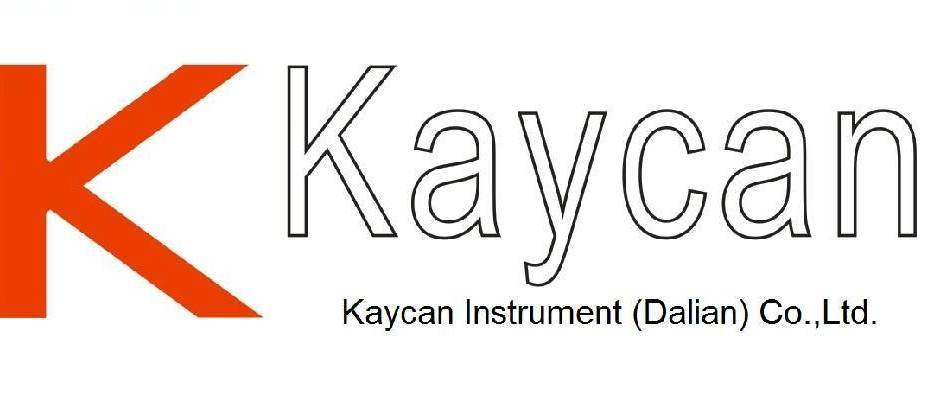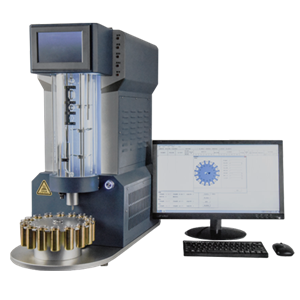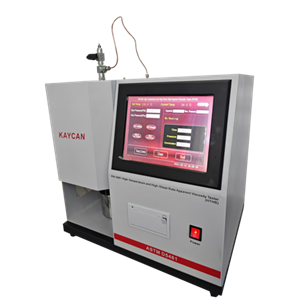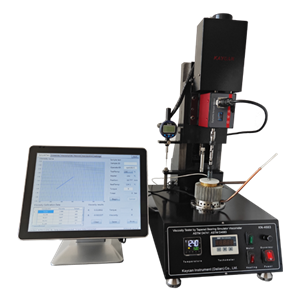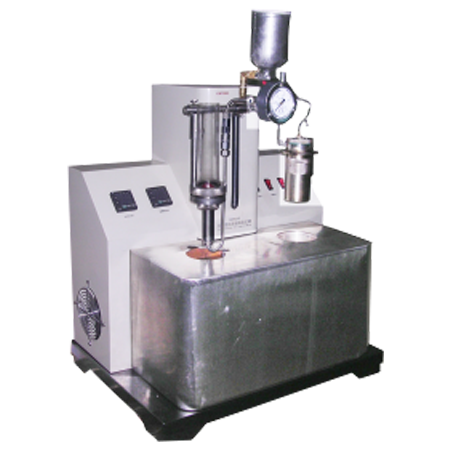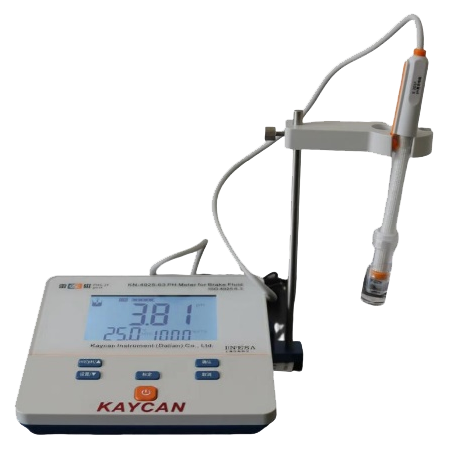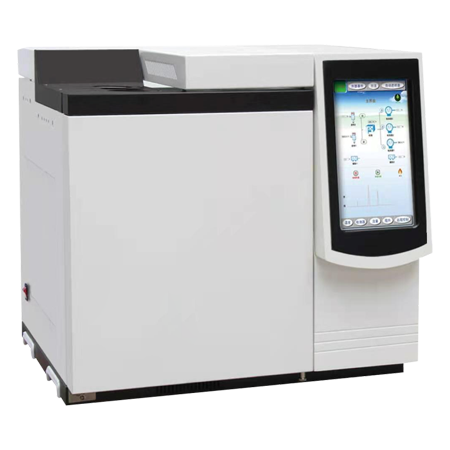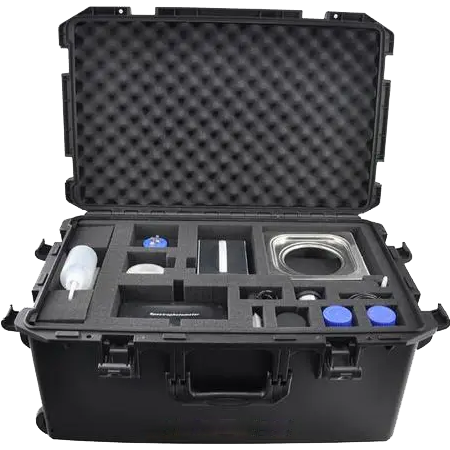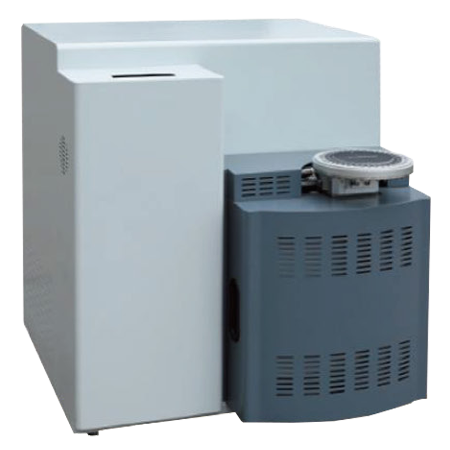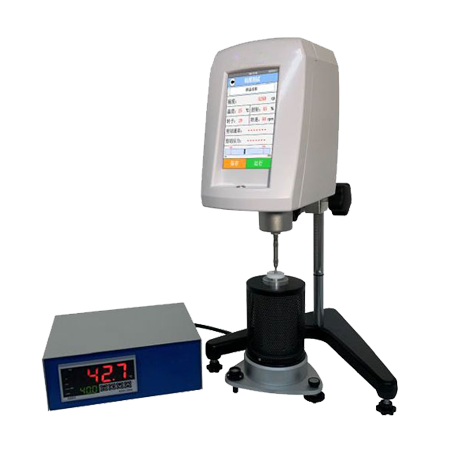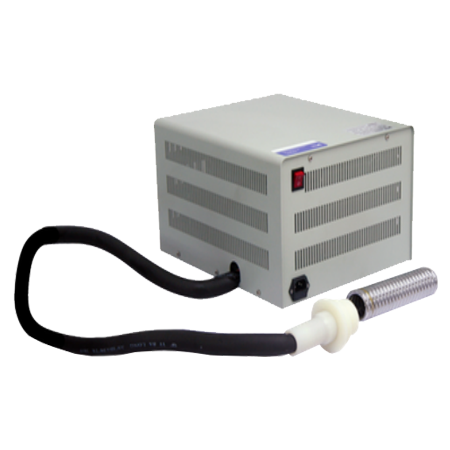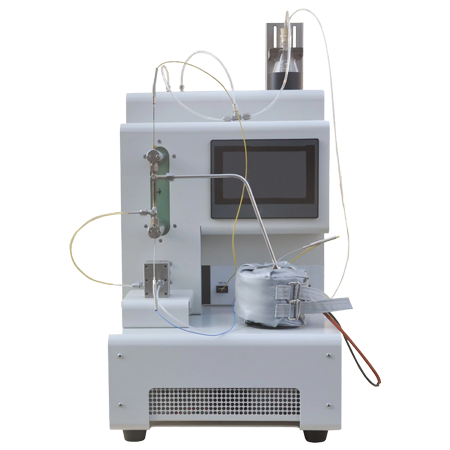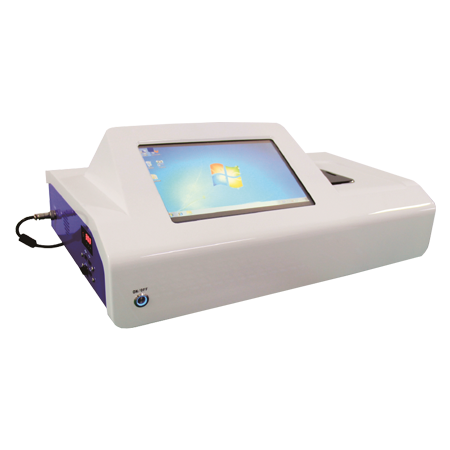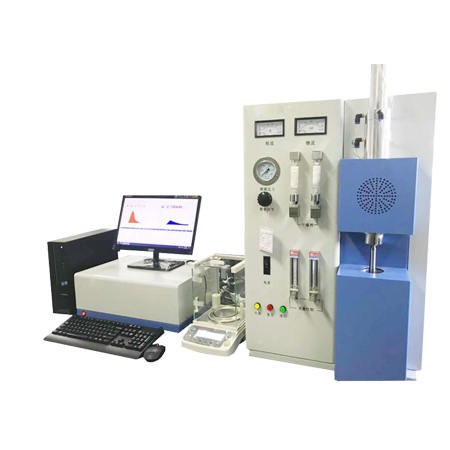-
GOST 7143 Ultimate Strength and Thermostrengthening Tester
KN-7143 Ultimate Strength and Thermostrengthening Tester conforms to GOST 1743 Greases. Method for Determination of Ultimate Strength and Thermostrengthening. It is mainly used to measure the pressure of the grease when it is displaced in the threaded pipe of the plasticizer at the test temperature, and convert it into a strength limit value, which is expressed as Pa. The appearance design of the grease strength limit tester is beautiful and generous, the structure design is reasonable, the operation is convenient, and the results are accurate
Send Email Details -
ASTM D1287 PH Meter
KN-1287 PH Meter conforms to ASTM D1287 Standard Test Method for pH of Engine Coolants and Antirusts and ASTM D1121 Standard Test Method for Reserve Alkalinity of Engine Coolants and Antirusts. pH is a measure of the hydrogen ion concentration and indicates whether an engine coolant, or a solution of these compounds is acidic, alkaline, or neutral. The pH range includes values from 0 to 14. Values from 0 to 7 represent the acidic half of the scale. Values from 7 to 14 represent the alkaline or b
Send Email Details -
ASTM D4059 GC for PCBs in Insulating Liquids
KN-4059 GC for PCBs in Insulating Liquids conforms to ASTM D4059 Standard Test Method for Analysis of Polychlorinated Biphenyls in Insulating Liquids by Gas Chromatography. This test method describes a quantitative determination of the concentration of polychlorinated biphenyls (PCBs) in electrical insulating liquids by gas chromatography. It also applies to the determination of PCB present in mixtures known as askarels, used as electrical insulating liquids.
Send Email Details -
ASTM D7843 Membrane Patch Colorimetry
KN-7843 Membrane Patch Colorimetry conforms to ASTM D7843 Standard Test Method for Measurement of Lubricant Generated Insoluble Color Bodies in In-Service Turbine Oils using Membrane Patch Colorimetry. Insoluble deposits are extracted from an in-service turbine oil sample using a 47mm, 0.45μm membrane nitrocellulose patch. The color of the patch is then analyzed using a spectrophotometer and the results are reported as a △E value in the CIELAB scale.
Send Email Details -
Analytical Balance
l Weighing units (g, ct, ozt, oz, gn, dwt, 1b) l Counting (Reference numbers 1/10/20/50/100) l Tare function over 100% of the capacity l Automatic calibration (external) l Below weighting on hook l Adjustable feed l Spirit level
Send Email Details -
Carbon, Hydrogen and Nitrogen elements analyzer
KN-5373 Carbon, Hydrogen and Nitrogen elements analyzer conforms to ASTM D5291 Standard Test Methods for Instrumental Determination of Carbon, Hydrogen, and Nitrogen in Petroleum Products and Lubricants and ASTM D5373 Standard Test Methods for Determination of Carbon, Hydrogen and Nitrogen in Analysis Samples of Coal and Carbon in Analysis Samples of Coal and Coke.
Send Email Details -
Brookfield Viscometer
Using a coaxial center structure, using a small sample adapter, each measurement requires a very small sample size, temperature control quickly and accurately. It has many measuring parameters, rich display content, convenient operation, intuitive reading, high measuring precision, stable rotational speed, strong anti-interference performance, wide working voltage and so on. can replace the same type of imported instrument
Send Email Details -
Portable Chiller
KN-ZL Portable Chiller can be widely used in petroleum, chemical, pharmaceutical, biochemical, scientific research and other fields. This is a very popular cooling device in the world.
Send Email Details -
ASTM D7097 Thermo-Oxidation Engine Oil Simulation Tester
KN-7097 Thermo-Oxidation Engine Oil Simulation Tester conforms to ASTM D7097 Standard Test Method for Determination of Moderately High Temperature Piston Deposits by Thermo-Oxidation Engine Oil Simulation Test—TEOST MHT and ASTM D6355 Standard Test Method for Determination of High Temperature Deposits by Thermo-Oxidation Engine Oil Simulation Test. Deposit-forming tendencies of an engine oil under oxidative conditions are determined by circulating an oil-catalyst mixture comprising a small sample of the oil and a very small (0.1g) amount of an organo-metallic catalyst. This sample mixture is then circulated for exactly 24h in the TEOST MHT instrument over a special wire-wound depositor rod heated by electrical current to a controlled temperature of 285℃ at the hottest location on the rod. The depositor rod is weighed before and after the test and any deposit formation on the rod as well as any deposits collected from rod washings are determined. During the test, precisely controlled and directed air is caused to bathe the oil flowing down the depositor rod and, thereby, to provide opportunity for oxidation. Precision of the test is strongly influenced by the care in manufacture of the wire-wound steel depositor rods and the treatment of the coating of the wound wire, the rate of air flow, and the amount and degree of mixing of the catalyst.
Send Email Details -
KN-NIR Near Infrared Spectrometer
KN-NIR Near Infrared Spectrometer adopts advanced MEMS Fourier transform technology. Optional spectral range of the instrument (1300nm~2600nm, 1150~1700nm, 1250~2100nm) meets the needs in testing multiple indicators and research. High signal to noise ratio is possible to analyze the parameters of low content of the sample. Built in wavelength calibration to ensure smaller difference between stations difference and better long-term stability. The tester equipped with a temperature control device, which can improve the data stability.
Send Email Details -
High-Frequency Infrared Carbon & Sulfur Analyzer
KN-8820 Infrared carbon and sulfur analyzer is used in conjunction with the high-frequency furnace, which can quickly and accurately determine the mass fraction of carbon and sulfur in steel, iron and its alloys, non-ferrous metals, cement, ore, glass, coke, coal, catalyst and other solid materials. It is a new technology product integrating optical, mechanical, electrical, computer and analysis technology, with the characteristics of wide measurement range and accurate and reliable analysis results. Using stable computer technology, the intelligence of the instrument, the collection and processing of the graphics, text and data displayed on the screen have reached the current high level in China, and it is an ideal analysis equipment for the determination of carbon and sulfur in many industries.
Send Email Details -
ASTM D5191 Apparatus for Vapor Pressure of Petroleum Products(Mini Method)
KN-5191 Apparatus for Vapor Pressure of Petroleum Products (Mini Method) conforms to ASTM D5191 Standard Test Methods for Vapor Pressure of Petroleum Products (Mini Method). It is used to determine the total vapor pressure exerted in vacuum by air-containing, volatile, liquid petroleum products, including automotive spark-ignition fuels with or without oxygenates.
Send Email Details
